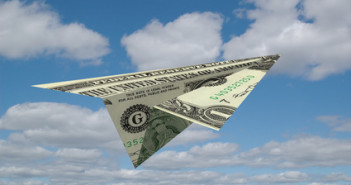The year began with ending the unfinished business left from 2012: the fiscal cliff. Politicians did kick some of the issues down the road, with the sequester awaiting us in February. However, markets are far more optimistic that solutions will be found – or are willing to buy temporary solutions as full ones.
Regarding the economy, the same trend of slow growth will likely continue. During January, the US reported a contraction in Q4 GDP, but as with Q3 growth, the devil is in the details.
* This article is part of the February 2013 monthly forex report. You can download the full report by joining the newsletter in the form below.
Political situation
Late on New Years’ Eve, US politicians made a deal regarding taxes: income taxes will go up only for households making $450K per year or more. A few more tax items were agreed upon, and one issue was left behind: the payroll tax cut was not extended.
This issue could have already hurt consumer confidence (as seen during January in the CB Consumer Confidence figure) and could be felt in retail sales numbers released in February. The full impact of this issue will be possible to asses only later on.
What was left behind?
Two issues: one is the debt ceiling, which was set to be reached towards the end of February. A motion to postpone this issue to the month of May was defused. The people in Washington probably wanted to avoid the debt ceiling debacle of 2011.
This approval, which joined the fiscal cliff resolution, had a significant impact: political matters came off the agenda very quickly. Rating agencies also liked the move and the threat of a credit rating downgrade seems far lower now.
It seems that the markets were quick to buy the temporary solution as a permanent one, but perhaps they were right: perhaps another last minute cliffhanger will not happen anymore, with the new Congress in place.
However, there is one issue still left for February: the sequester. The debt ceiling deal made in August 2011 included an automatic deal to reduce the long term debt: automatic spending cuts in both defense and non-defense expenditure. This was set for the end of 2012, assuming that the winner of the elections will get his way.
As we all know, the elections didn’t change too much in the split political scene. When a deal was reached on taxes on New Years’ Eve, the deal included delaying the sequester for two months. Politicians preferred solving the tax side before the spending side.
What will happen with spending? It is safe to assume that a long term debt reduction plan will not be reached. Democrats want more defense cuts and less welfare cuts, while Republicans want the opposite. They will probably agree on some small cuts in both fields, but the total cuts could be rather small. Yet again, kicking the can down the road.
If negotiations heat up and time passes by towards March 1st, the dollar could rise. Yet this time could be a bit different: with an early, watered down deal reached, and the issue staying away from the spotlight.
More slow growth
The headline GDP figure for Q4 was a shocker: the economy actually shrank by 0.1%, contrary to expectations. This figure will be revised during February. A revision to growth, even very modest growth, will be encouraging in the short term, while deeper contraction will be depressing.
In the longer term, it is important to look into the details: there are two main reasons for the contraction: a sharp drop in government spending, especially in defense, and a drop in inventories.
Both areas are volatile: defense spending jumped in Q3, and so did inventories. When inventories are depleted, they need to be replenished. This will likely happen in Q1 2013.
Other components of the GDP report are actually encouraging: consumer spending is up while the rate of saving is going up as well: the figures actually show an improvement in the situation of the US consumer. In addition, investment is up as well.
So, Q3 growth was strong: 3.1% and Q4 will probably be confirmed with a contraction. The general picture is closer to the annual growth rate for 2012: 2.2% – slow and frustrating yet continued growth in the world’s No. 1 economy.
Fed Policy
At the end of January, the Fed left its policy unchanged, with open ended QE and low rate guidelines unchanged. The Fed continues expanding its balance sheet by $85 billion a month in buys of treasuries and MBS. The rates will only move when unemployment drops to 6.5% and as long as inflation expectations (for core inflation) remain under 2.5%. No dates are attached, and this remains dollar bearish.
In the meeting minutes of the QE4 decision, it was revealed that some members saw QE beginning to unwind in late 2013. Indeed, there are hawks on the committee: the new composition of voting members has a different hawk now: Esther George instead of Jeffrey Lacker. However, the hawks are almost extinct on the FOMC and the Fed is controlled by the doves – Ben Bernanke being the most prominent one.
During February, no Fed meeting is scheduled. If there is any potential for a change in policy, it will not come from various statements, but rather from job figures – this is the key to easing of the easing and some chance of monetary tightening.
